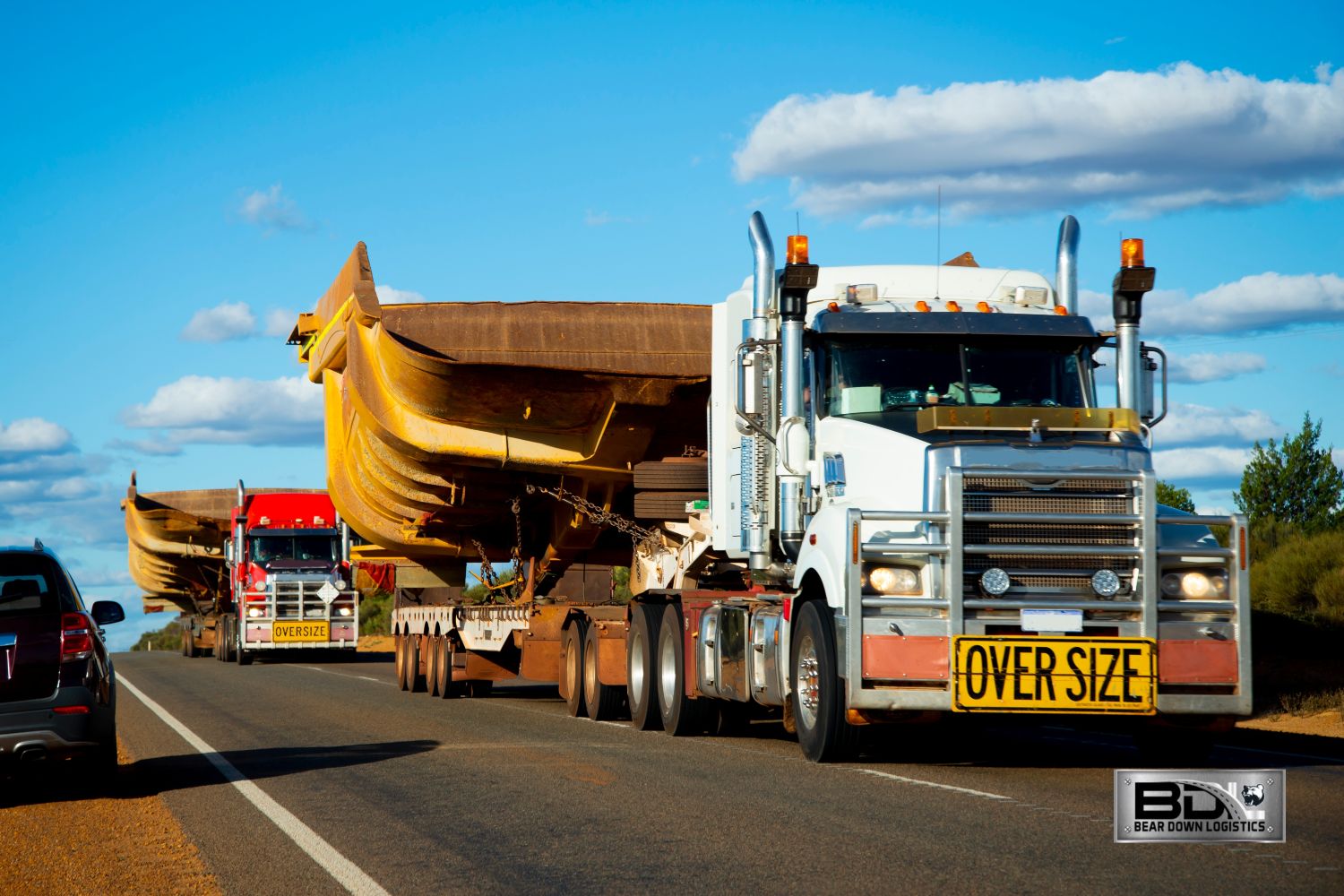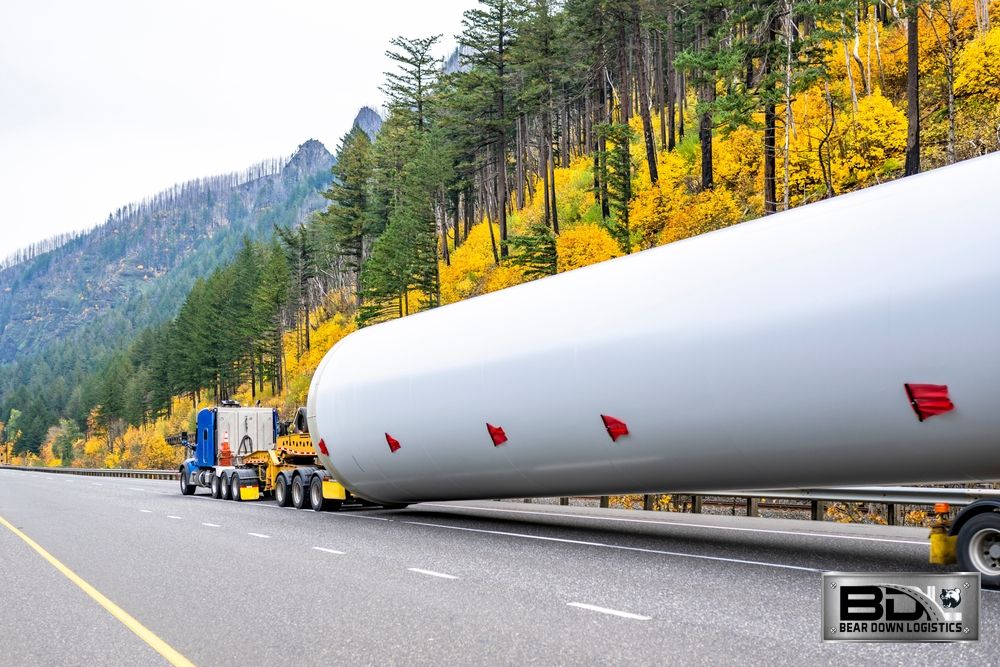Transporting oversized freight is a complex process that requires careful preparation, in-depth knowledge of regulations, and the right resources to ensure a safe and efficient move. In the state of Colorado, with its mountain passes, unpredictable weather, and strict permitting laws, the challenges of oversize load transport become even more significant. Companies such as Bear Down Logistic provide expertise and reliable services to help businesses navigate these complexities. To fully understand the requirements of heavy hauling Colorado projects, it’s important to take a structured approach to planning, compliance, equipment, and execution.
Understanding Oversized Loads in Colorado
An oversized load is any freight that exceeds the legal dimensions and weight set by Colorado state law. These dimensions typically include maximum width, height, length, and weight allowances. For example, loads over 8 feet 6 inches wide, 13 feet high, or 80,000 pounds gross weight may require permits and special routing. Because Colorado’s highways include steep inclines, sharp curves, and restricted corridors, even slightly oversized loads can create significant logistical challenges.
Preparation begins with identifying whether a shipment qualifies as an oversize or overweight load. Once the classification is confirmed, the proper permits and safety precautions must be secured to comply with state and federal transportation laws.
Securing Oversize Load Permits
Permitting is one of the most critical steps in heavy hauling. Colorado requires carriers to obtain oversize and overweight permits from the Colorado Department of Transportation (CDOT). These permits dictate approved routes, travel times, and safety requirements for escort vehicles.

Carriers must be prepared to submit accurate load dimensions, axle weights, and travel plans. Any errors in the permitting process can result in fines, delays, or even denial of the permit. For businesses that are new to heavy hauling in the region, working with an experienced logistics company can help streamline the process and prevent costly mistakes.
Route Planning and Timing
In Colorado, route planning for oversized loads is more complex than in many other states. The state’s mountainous terrain means that not all highways or bridges can safely accommodate heavy equipment or large industrial machinery. Certain roads may have seasonal closures or restrictions based on weather, which is especially important during winter months. Timing also plays a significant role. Oversized loads are often restricted from traveling during peak traffic hours, on holidays, or during adverse weather conditions. Planning trips during off-peak times helps reduce congestion and enhances safety for both the hauling crew and other drivers.
Preparing Equipment and Vehicles
Proper equipment selection ensures both compliance and efficiency during transport. Trucks and trailers must be rated to handle the size and weight of the load. Lowboy trailers, extendable flatbeds, and multi-axle vehicles are commonly used for oversized loads. Each piece of equipment must undergo regular inspection to verify that it meets safety standards before starting the journey. Tie-downs, flags, banners, and lighting systems are also required to alert other drivers of the oversized freight. Without these safety measures, haulers may face penalties or increased risk of accidents.
Coordinating Pilot and Escort Vehicles
Many oversized loads in Colorado require pilot cars or escort vehicles to accompany the transport. These vehicles help guide the truck, warn other motorists, and assist with navigating narrow roads or low-clearance obstacles. Escort requirements depend on the load’s size and route. Coordinating with trained and certified escort drivers ensures compliance with CDOT regulations. Escort vehicles also provide an additional layer of safety by helping the hauling team anticipate upcoming hazards and ensuring smooth passage through challenging roadways.
Safety and Risk Management
Heavy hauling carries inherent risks, especially in regions with rugged terrain. Preparation must include a comprehensive safety plan that addresses potential hazards such as steep grades, high winds, or sudden weather changes. Communication systems between drivers, escorts, and dispatch teams should be tested and reliable. Insurance coverage is another essential component of risk management. Businesses must ensure that their freight and transport operations are adequately insured to cover potential damages or delays. This not only protects the cargo but also safeguards the financial well-being of the business.
Preparing the Shipment
Beyond vehicles and permits, the load itself must be properly prepared. Freight should be balanced evenly across trailers to prevent shifting during transit. Securement devices should be tested to confirm they can withstand vibrations, sudden braking, or sharp turns. In some cases, specialized cradles or braces may be required to stabilize unusually shaped equipment.
Only one concise checklist is useful to keep in mind when preparing oversized freight for heavy hauling in Colorado:
-
Verify load measurements and weight
-
Ensure secure tie-downs and safety markings
-
Confirm permits and routing approval
-
Inspect hauling equipment before departure
Weather Considerations in Colorado
Colorado’s unpredictable climate is one of the most significant challenges for heavy hauling. Snow, ice, and sudden storms can delay shipments or create unsafe conditions for drivers. Even in warmer months, high winds across mountain passes may affect stability. Planning for weather means building flexibility into transport schedules. Monitoring forecasts and having contingency routes or backup plans ensures that delays are minimized. Businesses should also be prepared for sudden reroutes ordered by state authorities during severe weather.

Communication and Coordination
Successful oversized hauling depends heavily on communication. Dispatchers, drivers, escort vehicles, and clients must all remain aligned throughout the process. Technology such as GPS tracking and real-time communication systems allows logistics teams to monitor progress and respond quickly to any disruptions. Coordination also extends to local authorities. Police escorts may be required for extremely large or heavy loads, and construction zones often require additional permits or detours. By maintaining open communication with all stakeholders, businesses can ensure smoother execution of oversized hauling projects.
Conclusion
Preparing for oversized heavy hauling Colorado loads requires a combination of planning, compliance, and execution. From obtaining the correct permits to securing equipment, coordinating escort vehicles, and accounting for weather, every step plays a vital role in ensuring a safe and efficient transport. Companies like Bear Down Logistic provide the expertise and resources to manage these challenges effectively, offering businesses peace of mind that their shipments will arrive on time and in compliance with state regulations. By focusing on preparation, safety, and coordination, businesses can turn the challenges of heavy hauling into successful logistics solutions.
FAQs
What qualifies as an oversized load in Colorado?
Any load that exceeds state limits on width, height, length, or weight may be classified as oversized. Typically, this includes shipments over 8 feet 6 inches wide, 13 feet tall, or 80,000 pounds.
Are escort vehicles always required for oversized loads?
Escort requirements vary based on the size of the load and the planned route. Some loads may need only one escort vehicle, while others may require multiple.
How long does it take to secure an oversize permit in Colorado?
Permit processing times can vary, but most are issued within a few business days if the application is accurate. Complex or unusual loads may require more time.
Can oversized loads travel at any time of day in Colorado?
No. Oversized loads are often restricted from traveling during rush hours, holidays, or hazardous weather. Approved travel windows are specified in permits.
Why is route planning more challenging in Colorado than in other states?
Colorado’s mountainous terrain, seasonal closures, and weather conditions make certain roads unsuitable for oversized loads. Careful route planning ensures compliance and safety.








